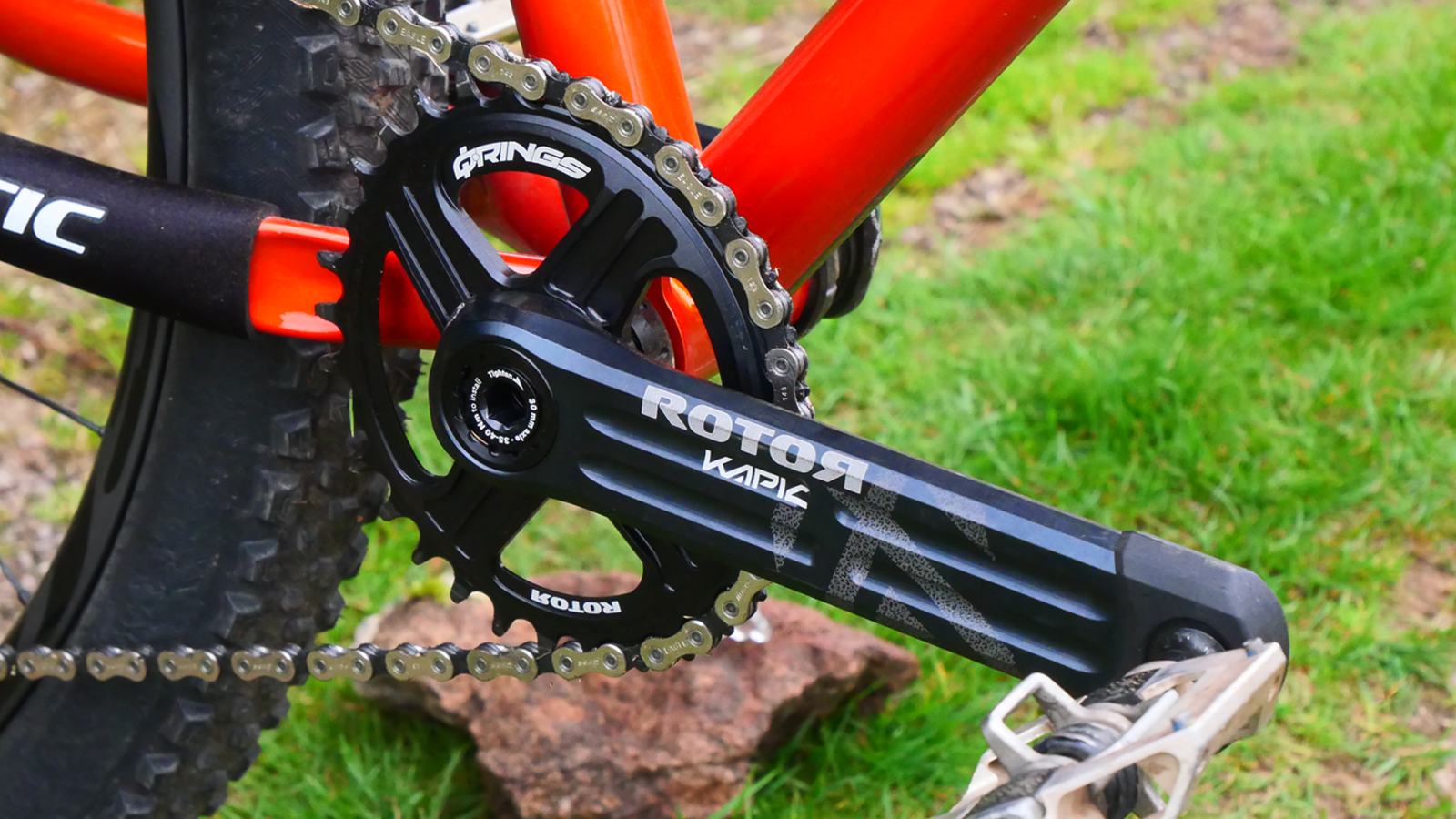
Rotor are best known for being one of the main proponents of the oval chainring. In the ongoing pursuit to eliminate pedal dead spots, the brand has naturally expanded to offer a range of cranksets to mount these chainrings too.
The Kapic is an alloy MTB crankset that is light enough to use on an XC/trail bike but strong enough to handle enduro riding. It's only fitting that for testing I paired the Kapic crank with one of Rotor’s oval Q Rings. I have had previous positive experiences with oval rings so I was excited to give Rotor's Q Ring a try.
I fitted them to my Cotic SolarisMax long-termer and then subjected them to all the unpleasantries winter could throw at it to see how the Kapic and oval combo performed.
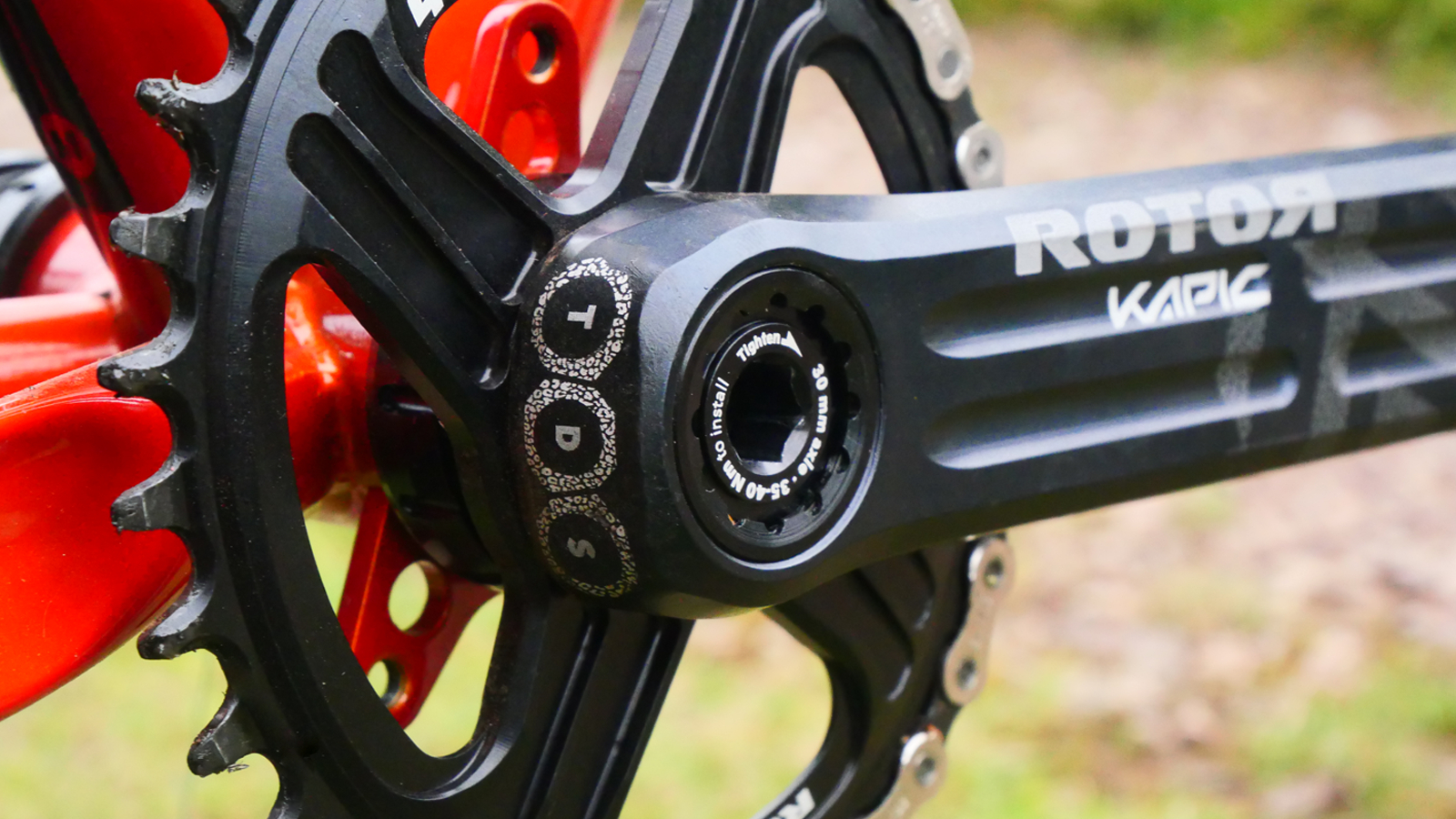
Design and specification
The crankset uses a four-piece modular design consisting of the crank arms, axle, chainring, and bottom bracket, all purchased separately, allowing customers to tailor the cranks to their spec needs.
The Kapic crank arms are CNCed from 6082 aluminum alloy using Rotor’s Trinity Drilling system. This allows them to remove unnecessary material from the outside but also from the inside of the crank and there are three internal holes from the axle to the pedal. My 170mm test samples weigh 362g (cranks and boots) plus 108g for the boost 30mm axle. Rotor offers the Kapic in 165mm, 170mm, and 175mm crank lengths.
The cranks come with a pair of boots to keep the ends nice in case there is any misjudgment of ground clearance. The bumpers come in seven color options: black, blue, green, yellow, red, pink, or orange.
The cranks use a 30mm hollow axle which comes in four different sizes, compatible with standard frames CL49 (L135 axle), and boost frames CL52 (L141 axle) or CL55 (L147 axle).
To pair with the 30mm axle size, Rotor has a range of compatible bottom brackets with either steel or ceramic bearings. Rotor caters for BB30, PF30, BSA, BB89, and BB92. My BSA30 test sample weighed 88g and came with an installation tool included.
Although round rings serve most riders absolutely fine, Rotor makes several performance claims for its oval Q Rings so I opted for a 34t oval Q-Ring as part of the review. Rotor says that the oval shape changes the biomechanical processes which in turn is claimed to lessen strain on the knees. Set up correctly, as per the markings on the chainring, the narrow diameter section effectively reduces the chainring size to minimize the ‘dead zone’ at the 12 and 6 o’clock crank positions for a smoother and more effective pedal stroke.
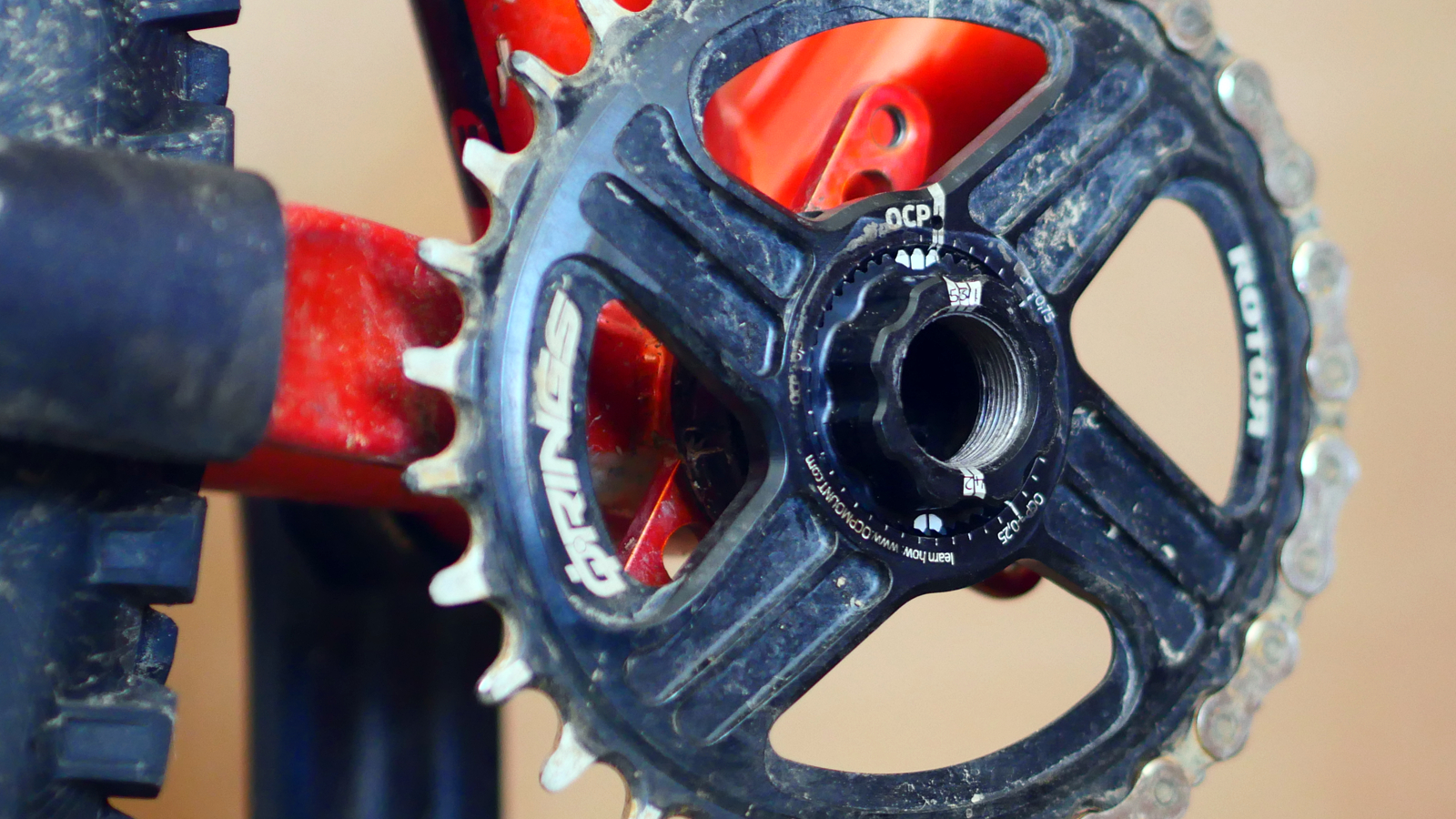
Rotor uses its own spline system, so if you want to run the Rotor cranks you also need to spec Rotor’s alloy CNCed chainrings. If you're only interested in the chainring, Rotor offers its Q Rings (round and oval) in 110 BCD, 100 BCD, direct mount Shimano, direct mount SRAM, and direct mount Race Face versions too.
The Rotor direct mount chain rings come in a wide range of tooth options to suit steep gradient spinners to full-speed XC riders, the oval rings come in a spread between 28t to 40t and the round ring has 26t to 38t options.
The fitting process was pretty straightforward other than one complication. Depending on your frame spacing you will likely need a 30mm Universal Spacer Set to ensure correct alignment. The instructions said I required 1x8.6mm NDS and 1x3mm DS, although the spacer kit only has round numbers (0.5/2/3/8/11) so I had to fit an additional 2x0.5mm spacers to eliminate any gaps. Other than this slight hiccup, the rest of the fitting and bearing preloading was trouble-free, with the chainring snugging precisely into the direct mount fitting, cranks screwing to the axle using a 10mm hex, and the preload dial snugging it all together.
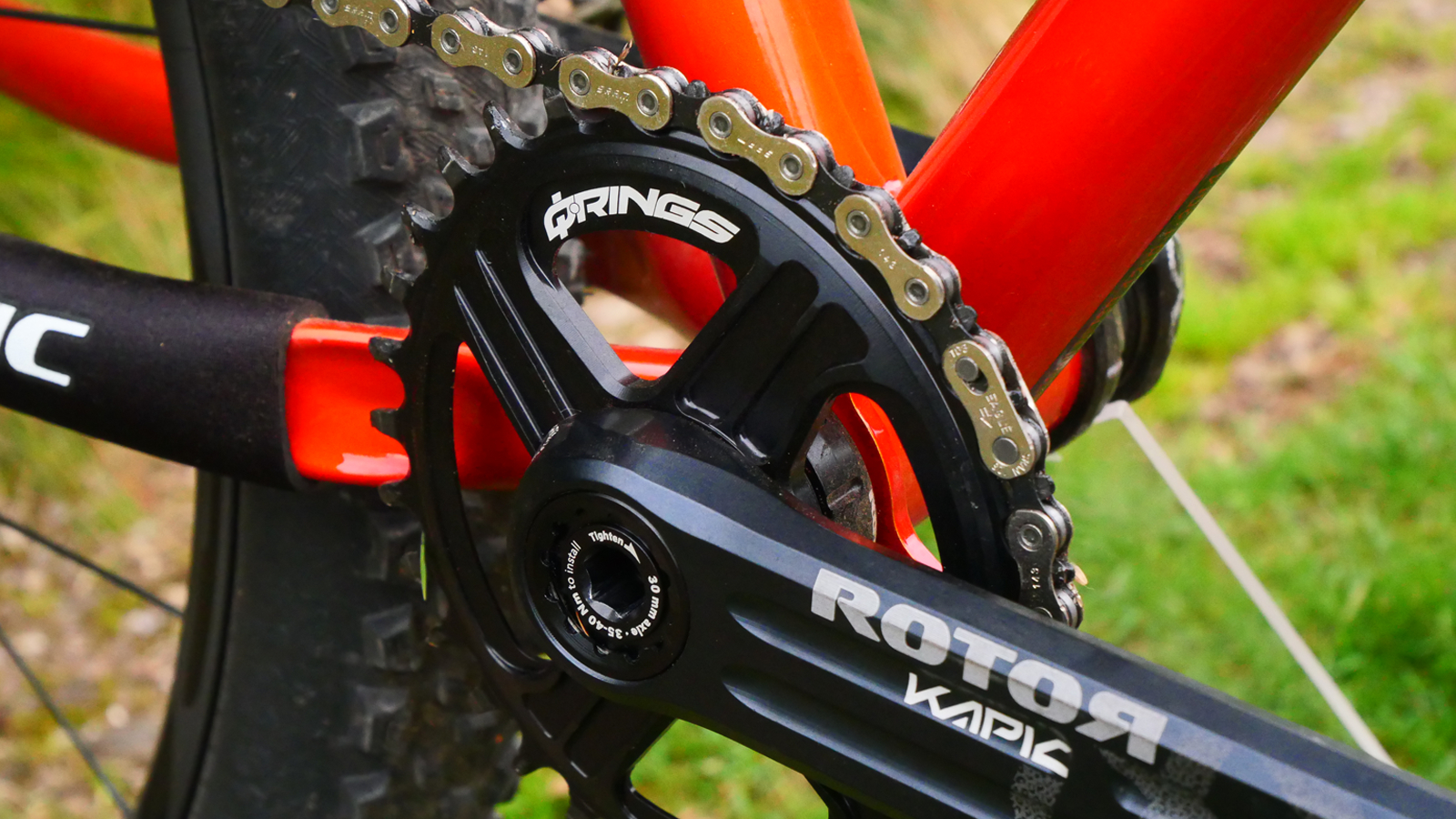
Performance
Under power and load, the Rotor Kapic’s feel stiff and direct. I only weigh 73kg so I'm not going to be the most strenuous on the crank arms, but even during hard sprints and big impacts I didn't feel any flex or vagueness. They have been fit and forget too, with no need to give them any attention once they were fitted.
Oval rings have had a bad rap in the past, luckily brands like Rotor have figured it out and modern oval chainrings work as they should. If you’ve never ridden an oval before it will feel a little odd at first, Rotor says that it can take up to 10 hours for your muscles to adapt although the initial oscillating feeling faded into the background within an hour or so of riding. It may not be for everyone, but I got along very well with the Rotor Q Ring shape and found it gave a nice power delivery through the pedal stroke which helps boost climbing traction. Usually, I run a 32t chainring, but sizing up to a 34t hasn’t left me wanting for an extra gear on steep stuff.
The big advantage of opting for an oval chainring using Rotor’s crankset is the Rotor direct mount spline OCP (Optimum Chainring Position) technology system. This fine-toothed direct mount spline gives one-degree increments of adjustment to clock the chainring based on your pedal stroke. Adjusting the position of the oval is a simple process that only requires the removal of the drive-side crank to give access to the chainring. Beyond pedaling dynamics, the chainring has performed well when riding, I haven’t experienced any dropped chains during testing and the oscillating chain tension doesn’t appear to affect gear shifting either.
After 800km, the Rotor bottom bracket is a little grumbly from being subjected to a heinous amount of wet weather riding and some very indiscriminate pressure washing for good measure. Still, it hasn’t developed any play or notchiness yet. The black finish has worn off the aluminum chainrings but the teeth appear to be resisting wear and still have some more miles left. Otherwise, minus a few little scratches, the finish on the crank arms is still very presentable.
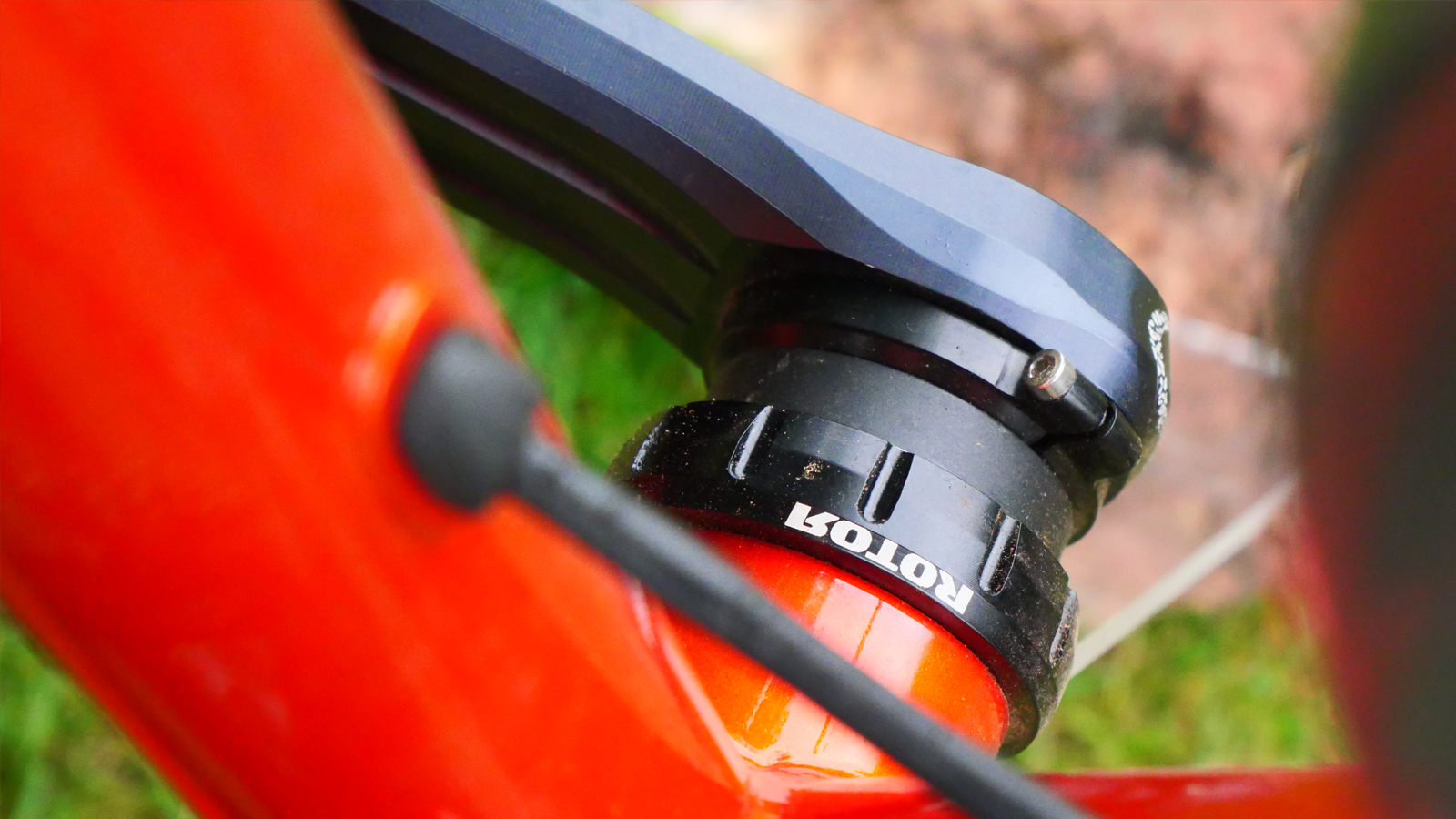
Verdict
The Kapic crankset has been a solid performer, stiff enough to handle some rowdy descending yet impressively light for an alloy crankset. For me, the Rotor Oval ring offers a performance boost too, smoothing power delivery and aiding traction of steep climbs. For those who are very particular about their pedal stroke, the OCP system will be a big bonus giving the ability to tune the oval’s clocking characteristics.
The Kapic set tipped my scales at 540g for the 170mm crankarms, axle, and 34t chainring which is light for an XC MTB crankset, never mind one that can handle some proper rowdy riding. Although it's made from alloy it's not all that more affordable than carbon. For comparison, SRAM’s lightest XX SL crankset ($550 / £590) is claimed to weigh 475g, Shimano’s XTR crankset ($479.99 / £345) is claimed to weigh 544g, Race Face’s Era crankset ($499 / £449) weighs 485g. Once you have tallied all the Rotor bits together, the cost of the Rotor crankset ($502 / £352) isn’t far off carbon money. An investment the proper weight-conscious riders may deem worthwhile, especially considering the broader bottom bracket and chainring options.
Tech specs: Rotor Kapic crankset and Q Ring
- Price: Crankset $335 / £223, axle $67 / £52, Q Ring $100 / £82, BSA30 steel bottom bracket $70 / £5
- Crank sizes: 165, 170, and 175mm length cranks, 52.5mm chain lines
- Chainring options: oval (28t-40t), round (26t-38t), compatible with 11s, 12s, 13s
- Axle size: 30mm
- Bottom bracket compatibility: BB30, PF30, BSA, BB89, and BB92
- Options: Black, Blue, Green, Yellow, Red, Pink, or Orange boot colors
- Weight: 540g (170g with 34T ring)







